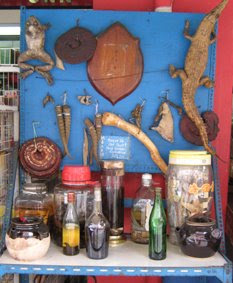 When the Rain Stops Falling
When the Rain Stops FallingThe theme for the Montpelier School fete this year is be a celebration of different cultures, and it’s not surprising. There are thirty-four different first languages spoken at Montpelier and that does not count those, such as the Moodie children, who have a smattering of other second languages, in their case Farsi, the Persian tongue. It is a revealing insight into just what a multi-cultural city London is, as Ealing and in particular North Ealing where the school is located, just a few hundred yards from here, appears to be a predominantly white suburb, mainly of English and Poles. The extent of multi-culturalism generally in London shakes pre-conceived stereotypes, and it seems unusual to be in the company of white-skinned people none of whom appear to speak a word of English while others with very much darker hues speak either the Queen’s English or broad Cockney. Meanwhile, the Japanese dress and act more English than the English and New Zealanders persist in wearing long shorts and jandals.
The school PTA is asking for helpers for its fete and if we did not already have tickets to see Neil Young that day, we would respond to the call for volunteers to run the bar. Which highlights another cultural difference, and Marty is reminded of his trip some time ago to visit Fleur at her international school in Dusseldorf. He arrived late on the afternoon of their school fete to find the parents, teachers and supporters segregated into their respective national tents, drinking liberally, the Scandinavians particularly impressive getting stuck into schnapps like there was no tomorrow (and for some there probably wasn’t) to the accompaniment of raucous drinking songs. Such fun would be frowned upon in New Zealand, probably earning scolding newspaper headlines, and perhaps (or hopefully) the children confiscated from parents by an overzealous agency.
Late last evening we stopped for a modest supper at The Gallipoli, a Turkish restaurant in Islington, just down the road from the Almeida Theatre where we had gone, after an hour and a bit driving through the North London traffic, to see a production called When the Rain Stops Falling. Written by an Australian, Andrew Bovill, the play is set in London and Australia between 1959 and 2039 and follows four generations of a family in which the central character travels to Australia to discover something about the disappearance of his father twenty years earlier. The audience was audibly amused when one of the players referred to the book he was reading, The Rise and Fall of the American Empire, 1975 – 2015. The script was clever, the transitions between scenes in London and Australia, and the interweaving of actors playing the same characters at different ages, sometimes all on stage together, were impressive.
Again, like previous performances we have seen since arriving, it was sublime. One of the things about theatre in London is that many of the faces on stage are familiar and a look through the programme confirms this. One of the central actors, Richard Hope, has been in television shows and films galore; Eastenders, Midsomer Murders, The Forsyte Saga, Tipping the Velvet, Judge John Deed, Casualty, Bramwell, Peak Practice and Brideshead Revisited, to name a few. Similarly, one of the Australians, Leah Purcell, has been in McLeod’s Daughters, Water Rats, Police Rescue, The Proposition and Lantana, all of which should be familiar to New Zealand viewers or Nick Cave fans.
If it was an hour and a bit getting to the theatre through North London, we were smarter going home or so we thought, through Central London and down the A40, which passes not more than a few hundred yards from home, as we call this place since our colonisaion. That plan worked like a dream, until we got within about two miles where we wound up in a traffic jam, at 11.00pm. Two of three lanes were closed for no apparent reason and traffic competed for a place in the single open lane, the flow made worse by detours off the unimpeded A40 and onto slip roads with traffic lights which seemed to change colour with the frequency of a strobe light. Such are the perils of driving in a city of more than ten million people.
If the theatre at night provided a good dose of culture, so too we had seen an episode of Coronation Street during the day. Some six months since we have seen an episode, and with New Zealand screenings being one year behind the UK anyway, we expected to be hopelessly out of touch but not so. Ken, Deidre and Blanche are still there and still bickering. Some things never change.













